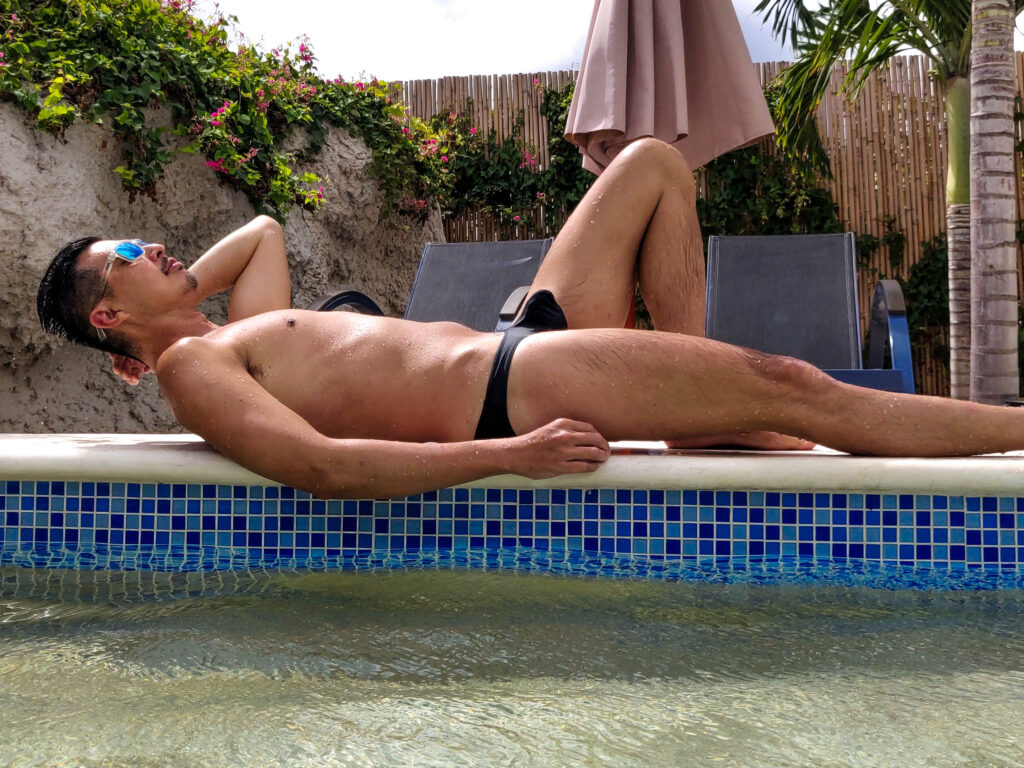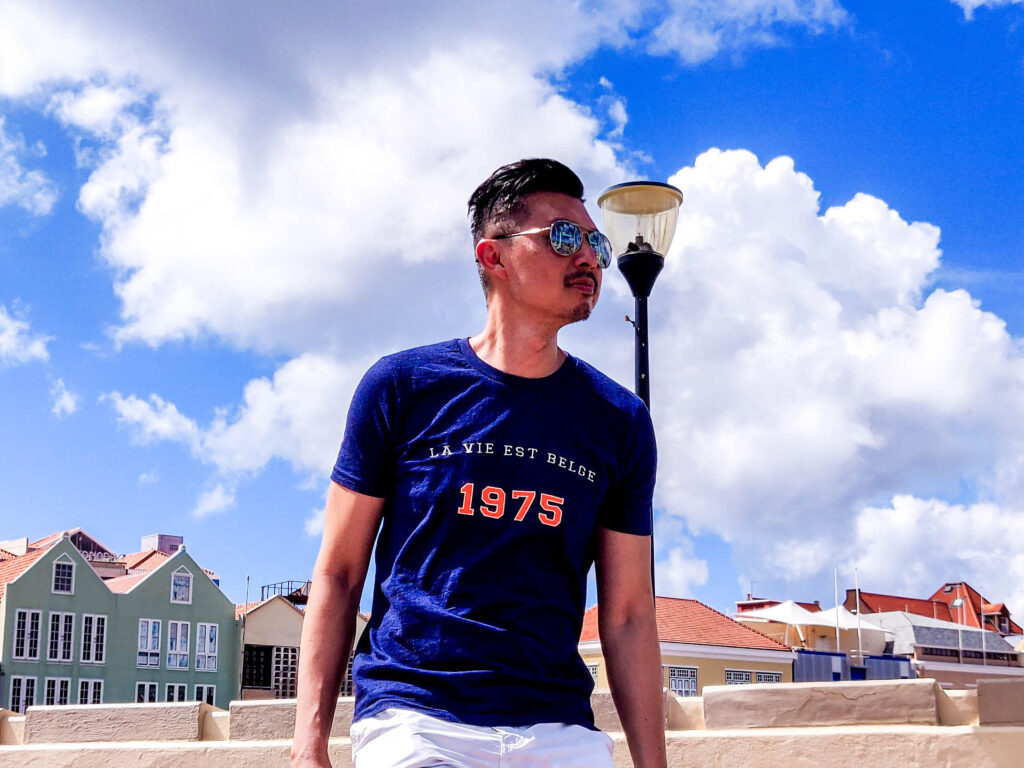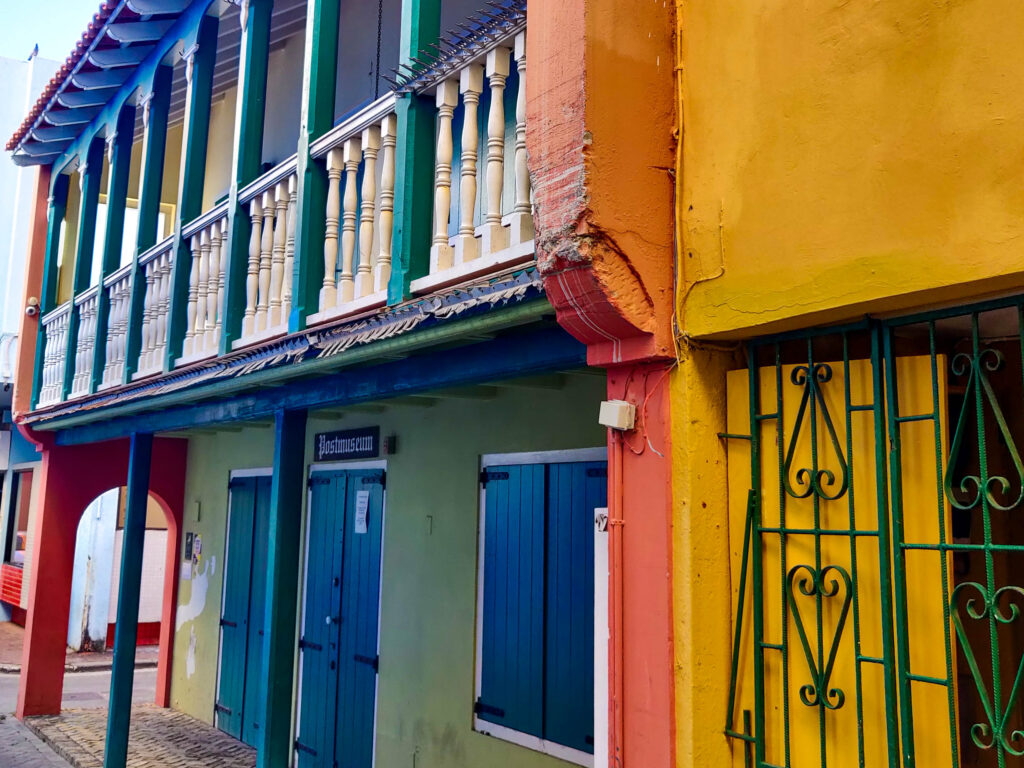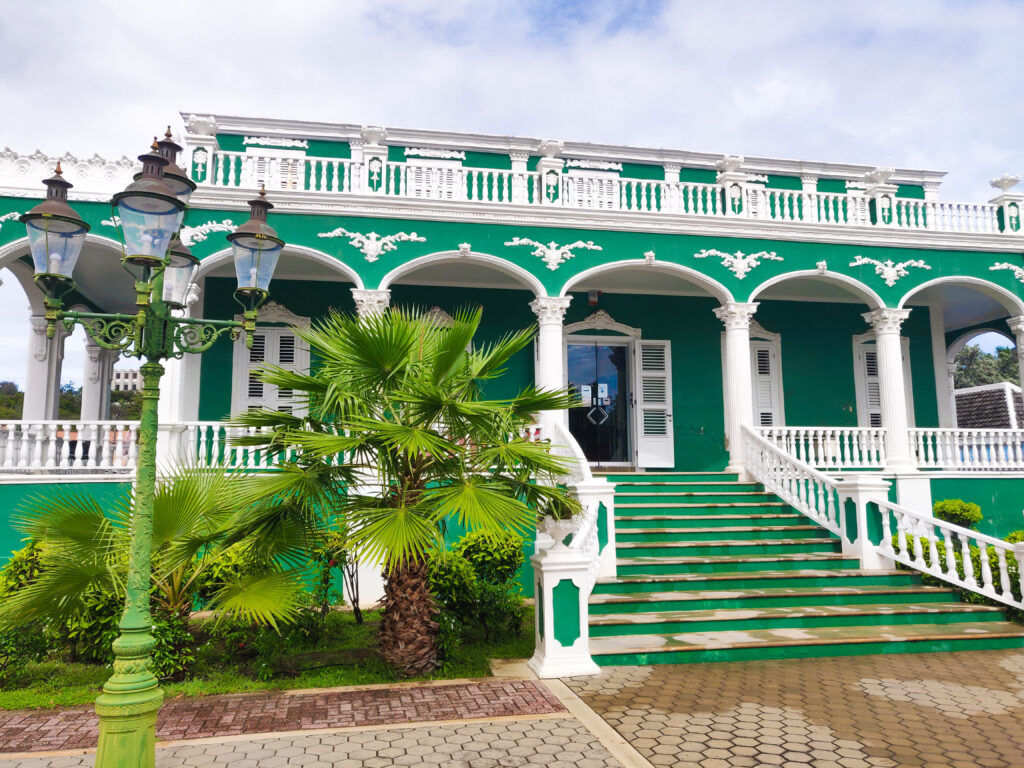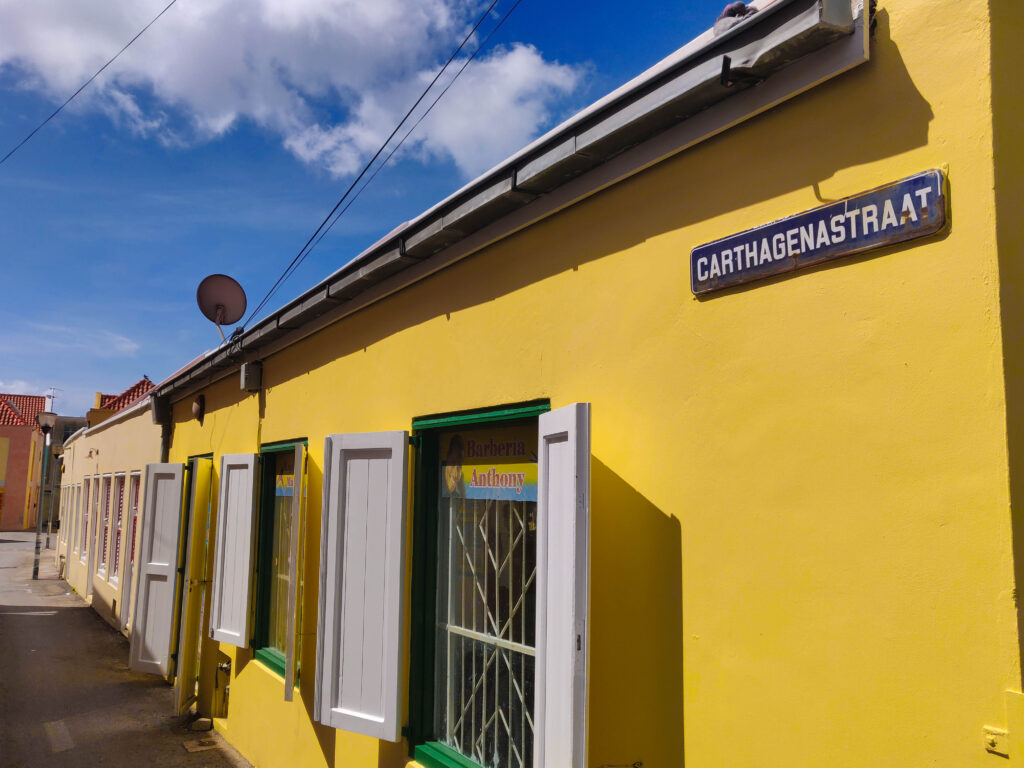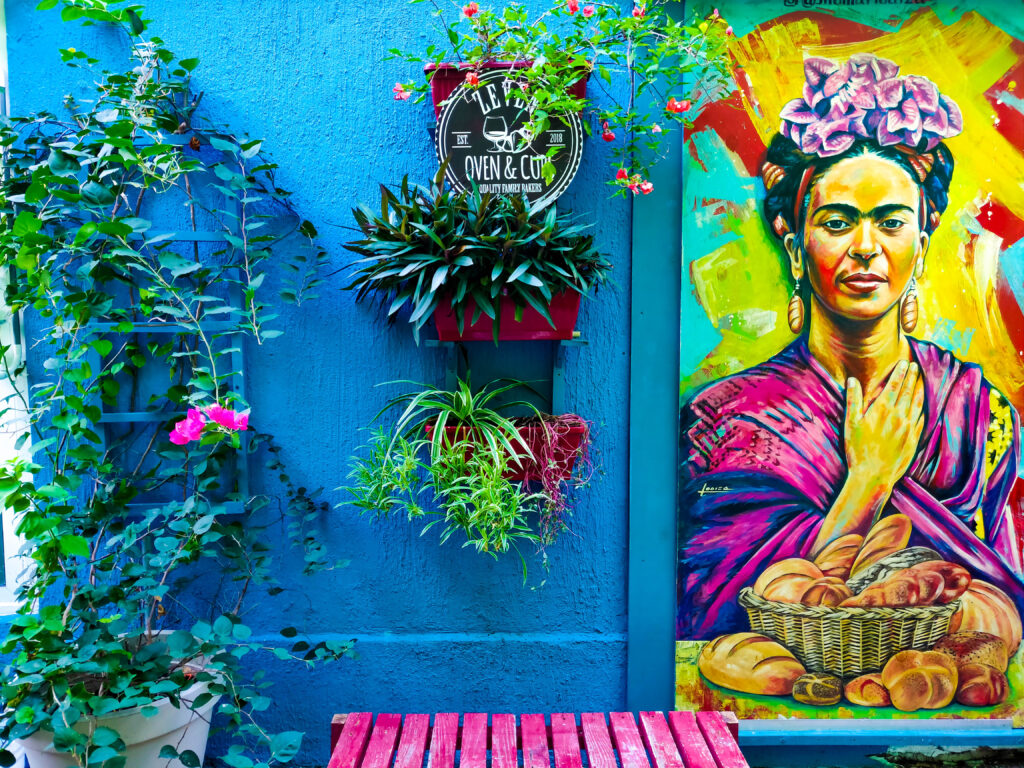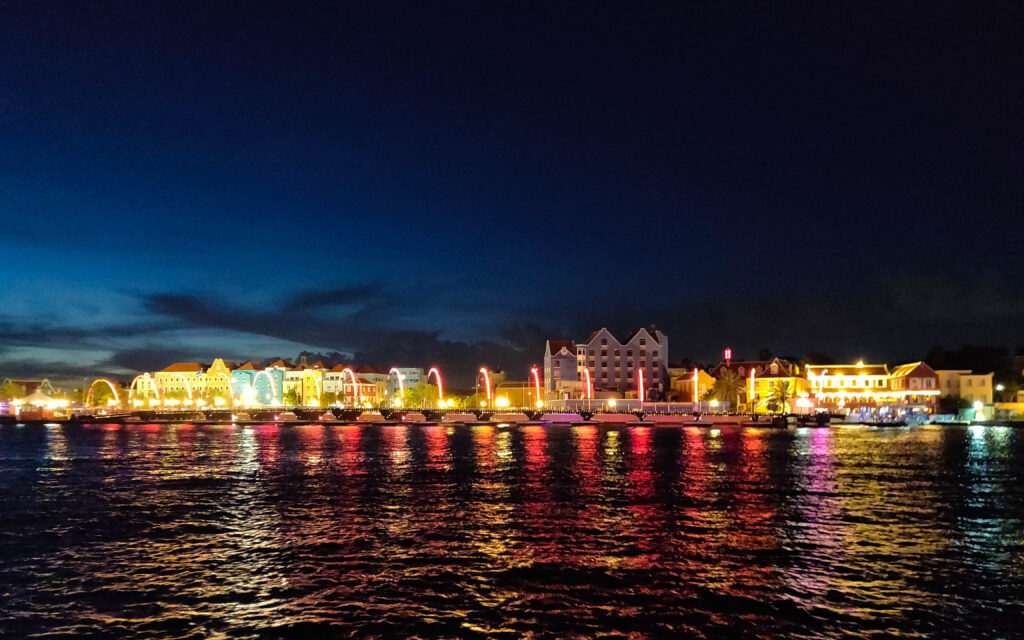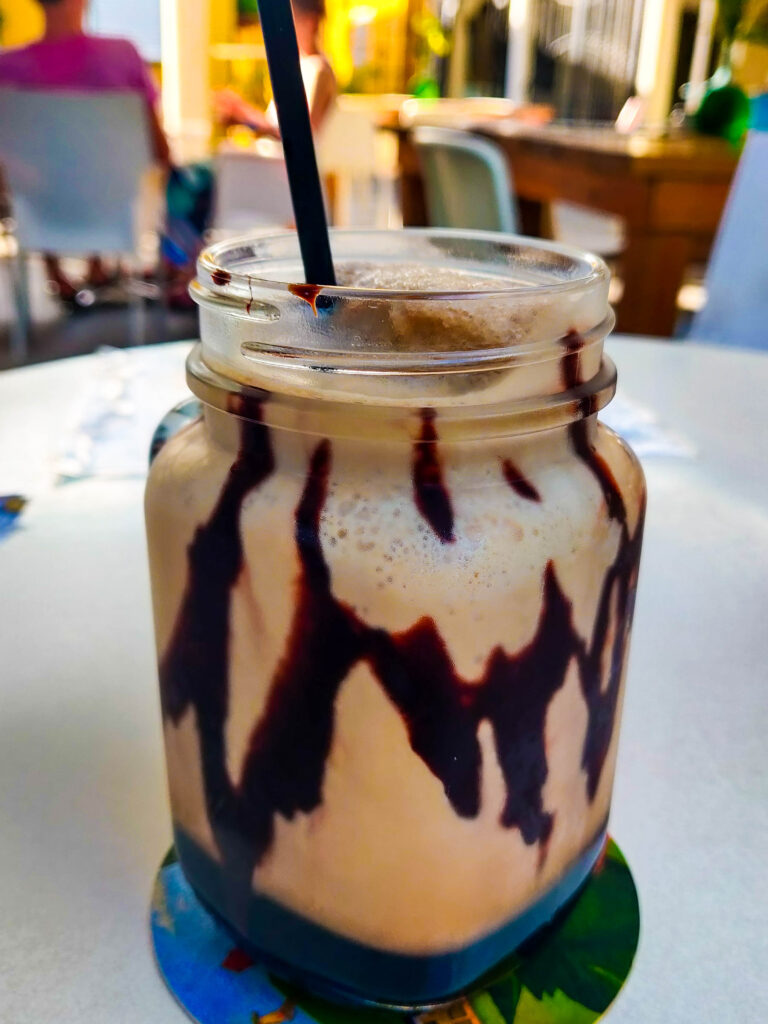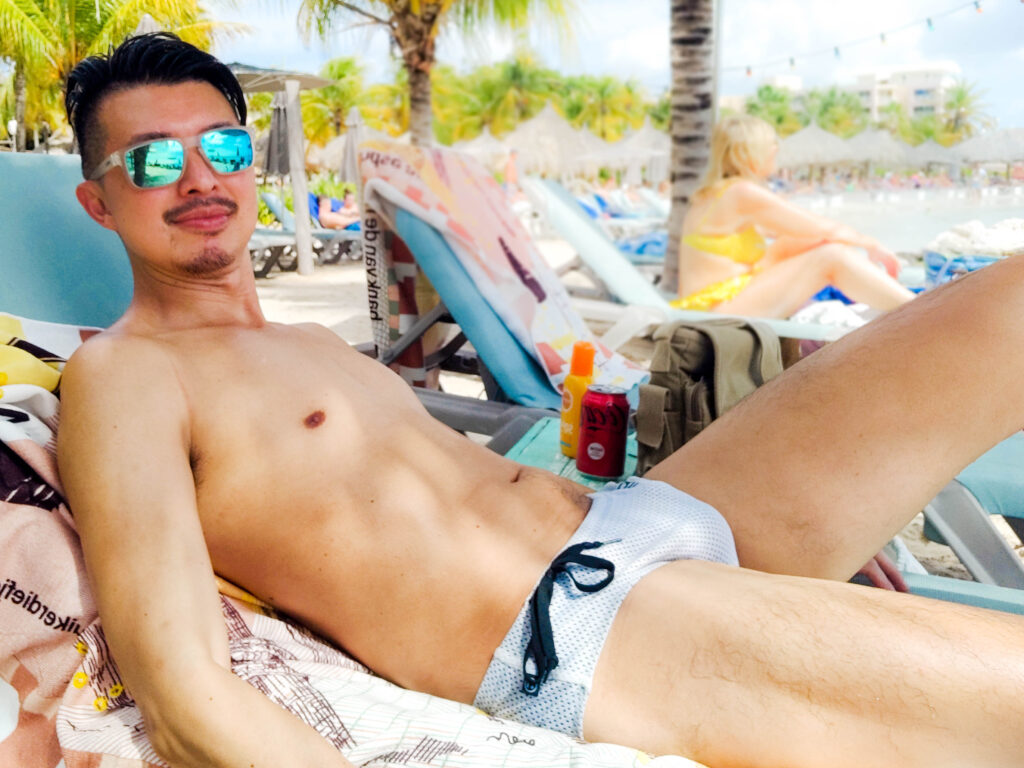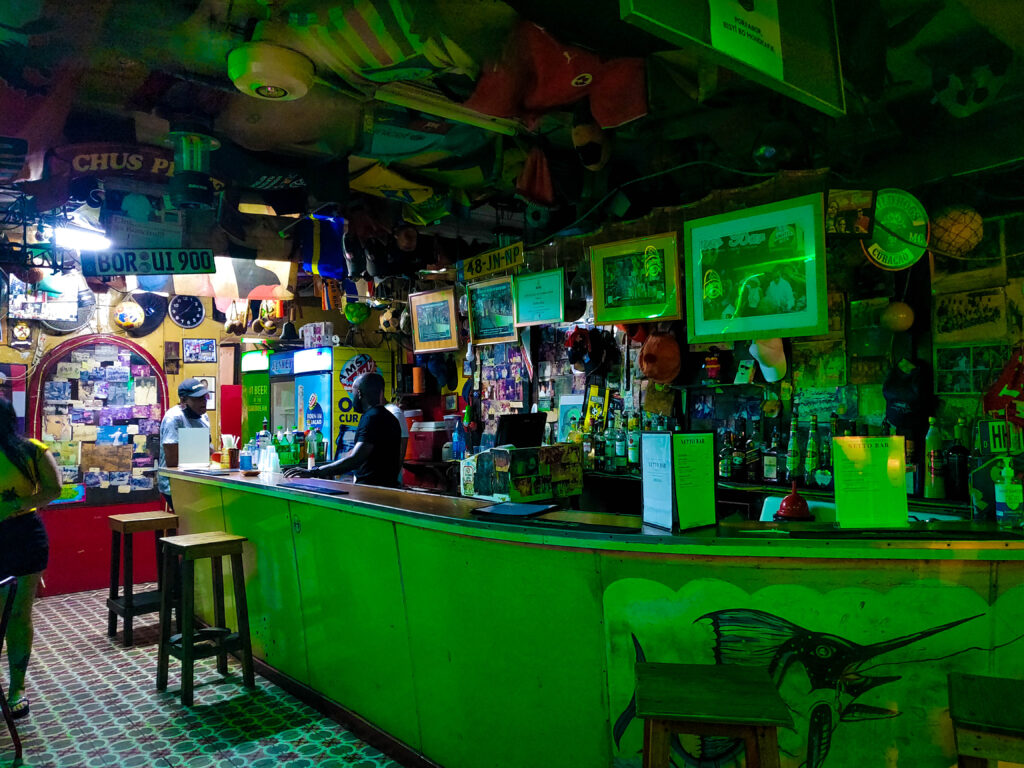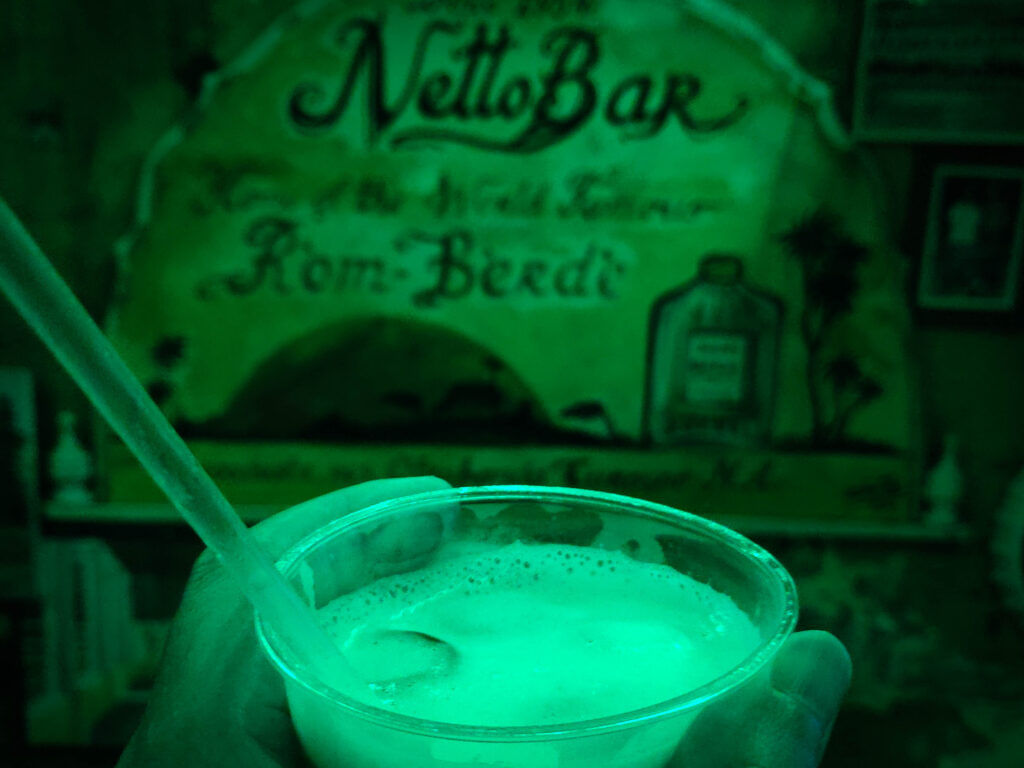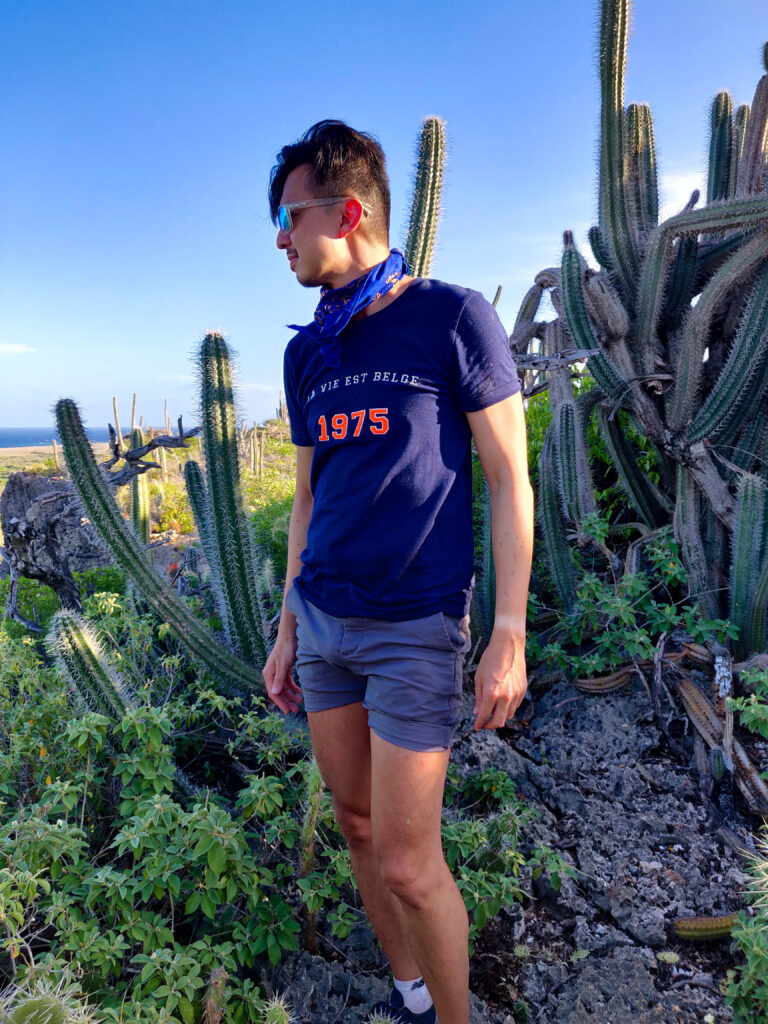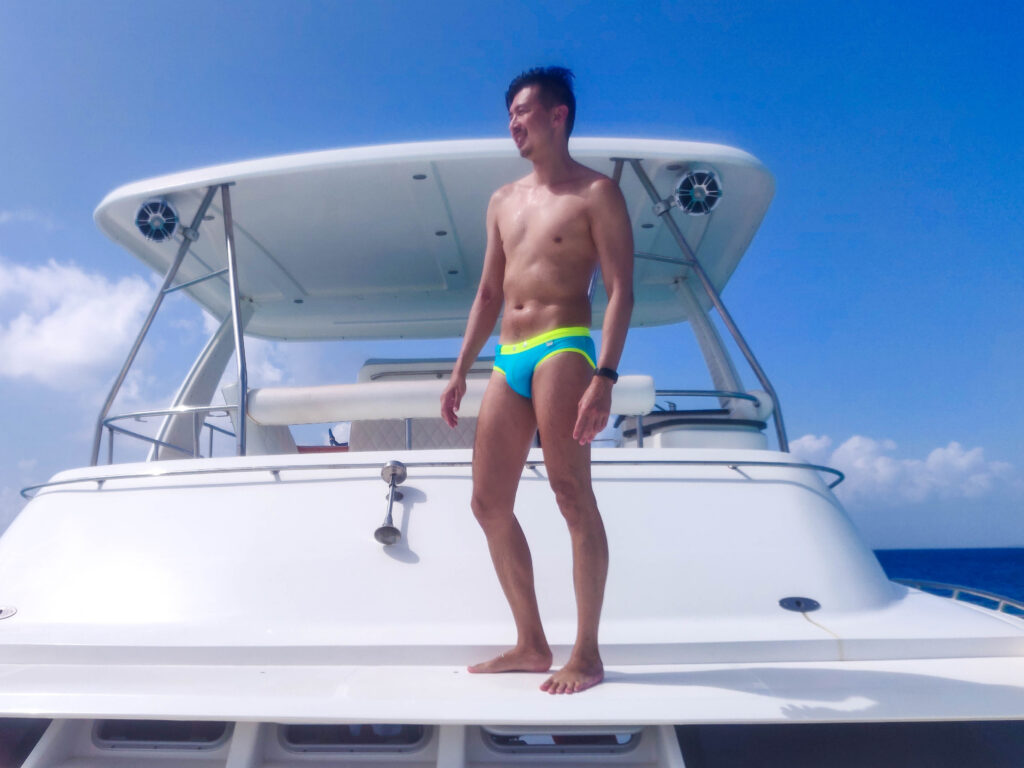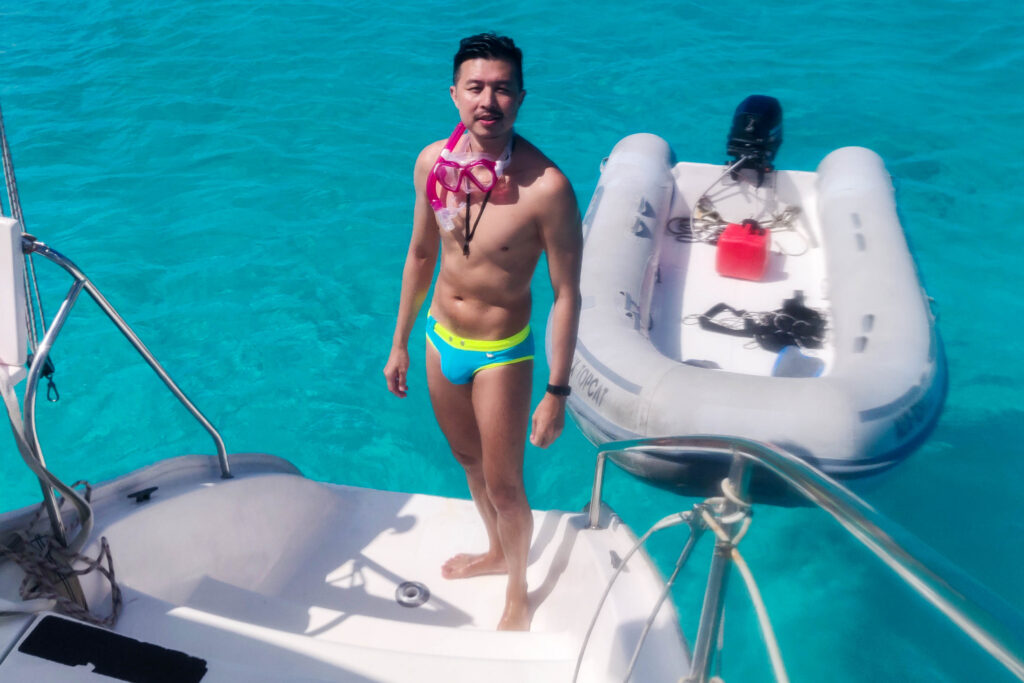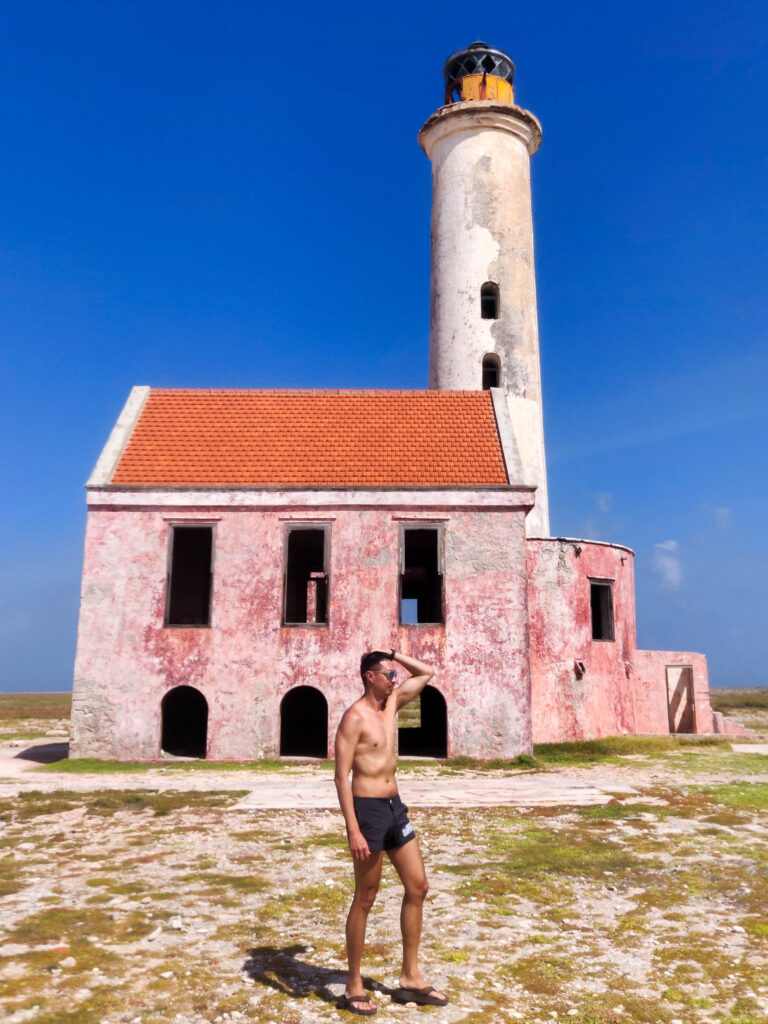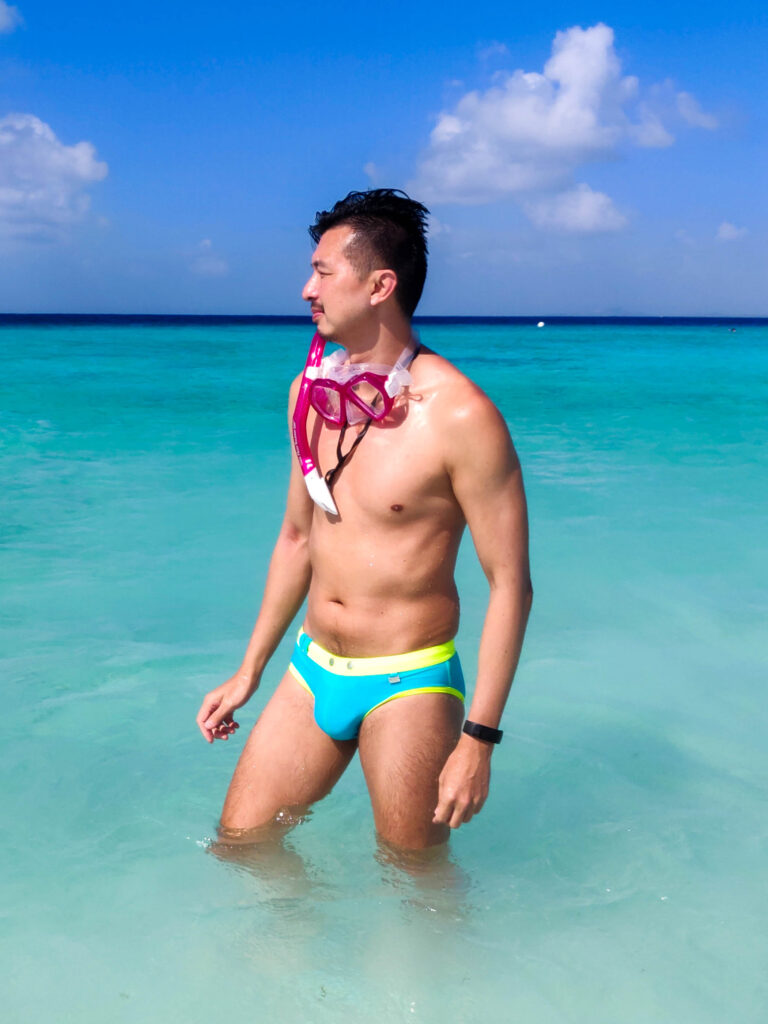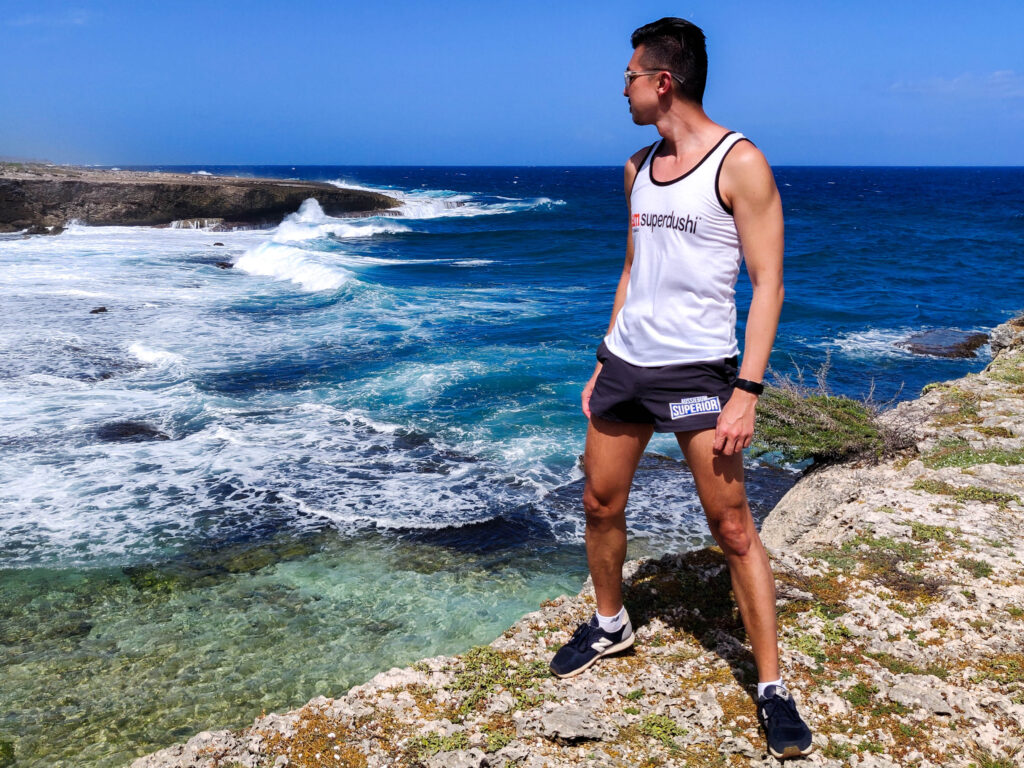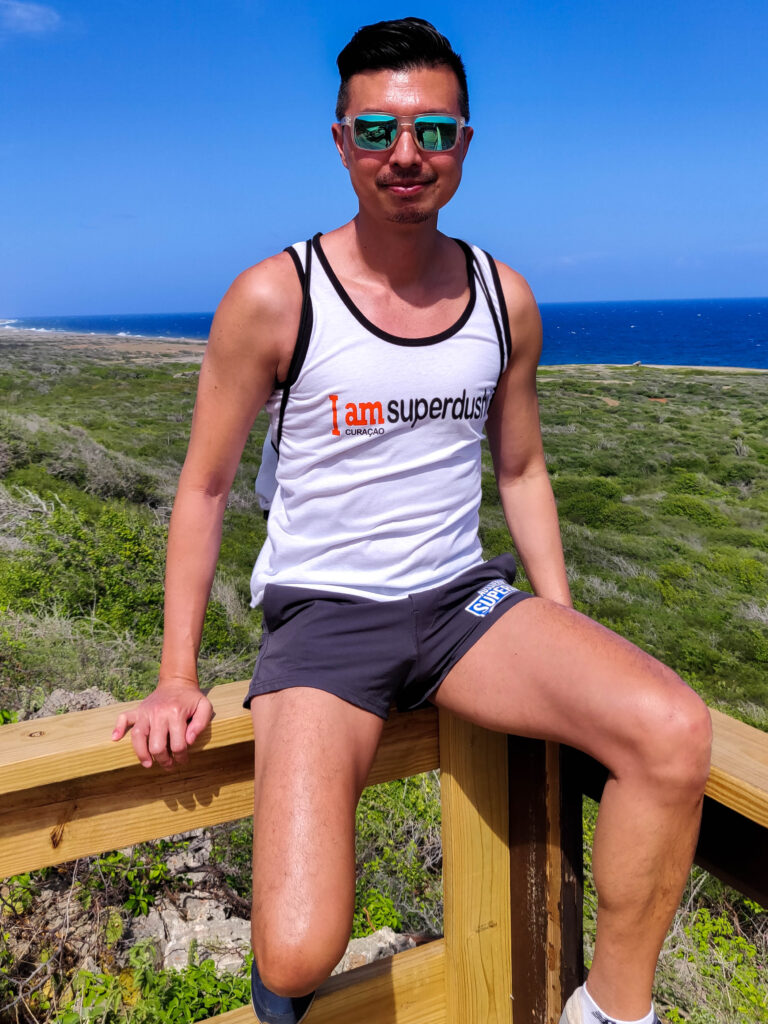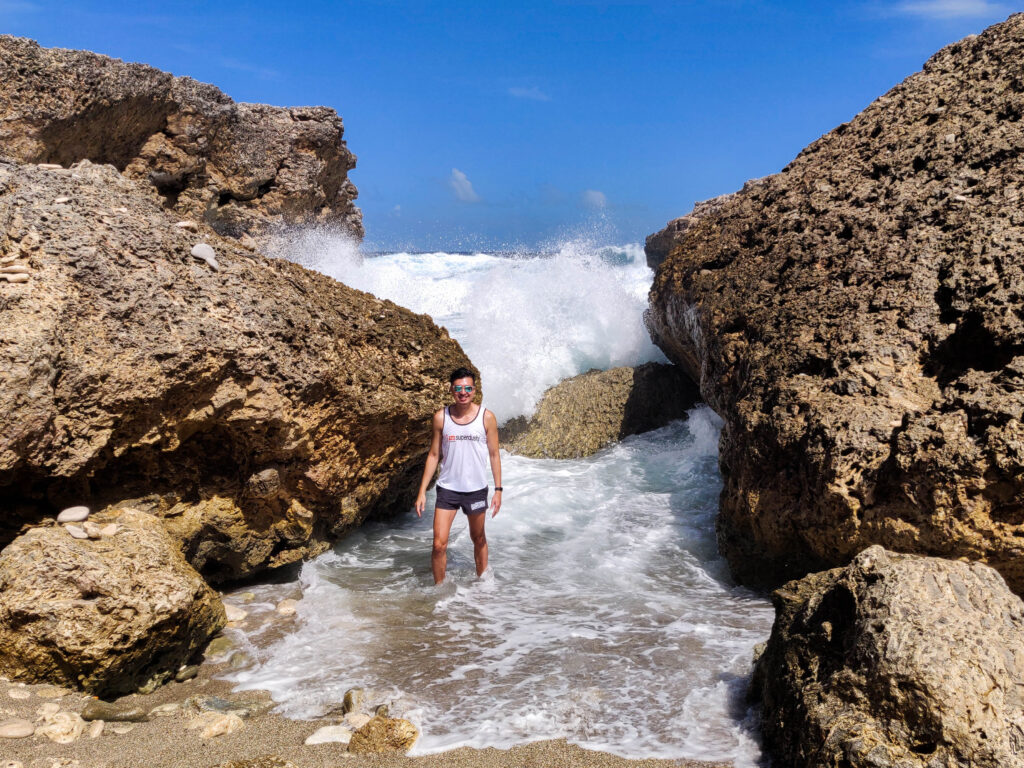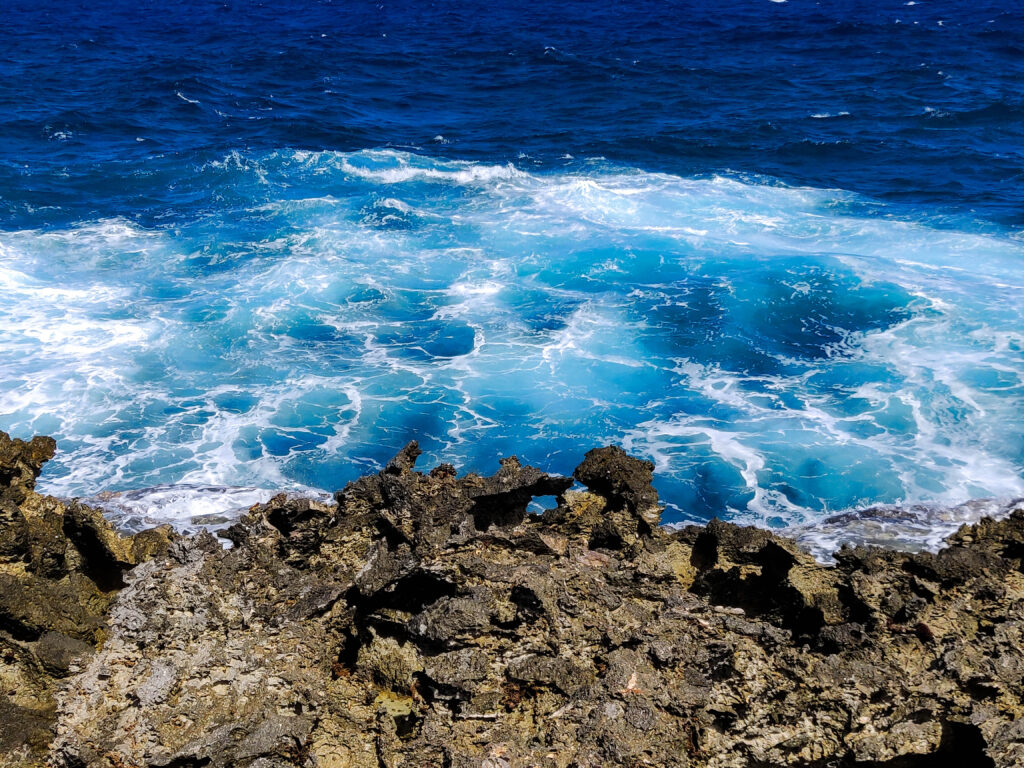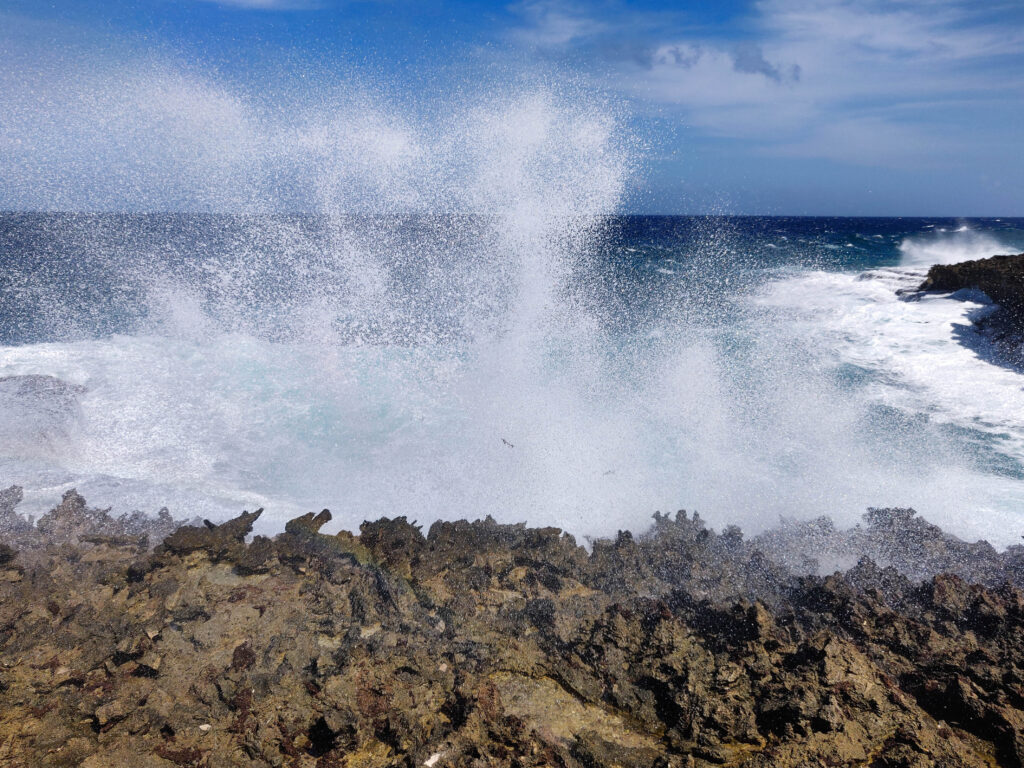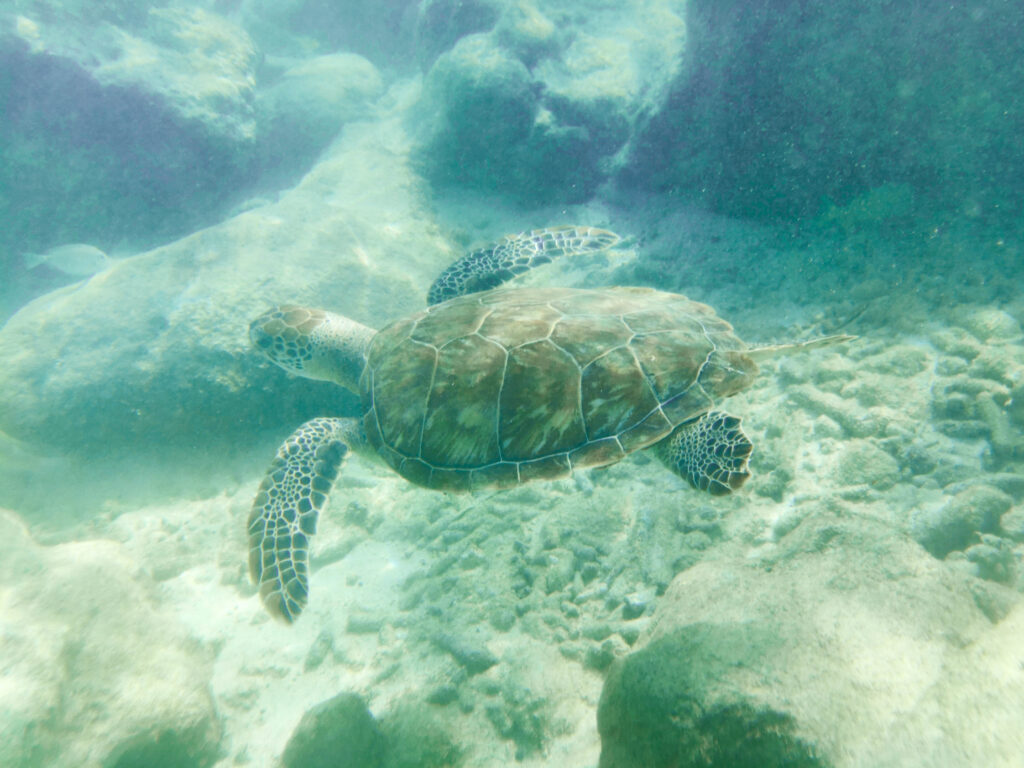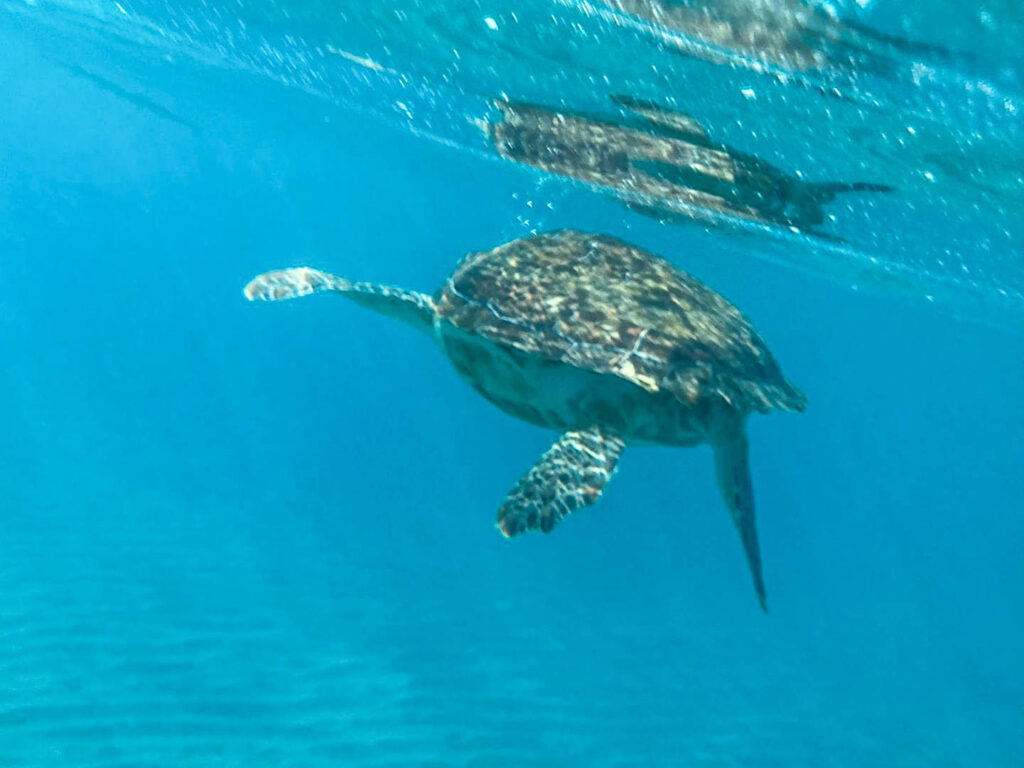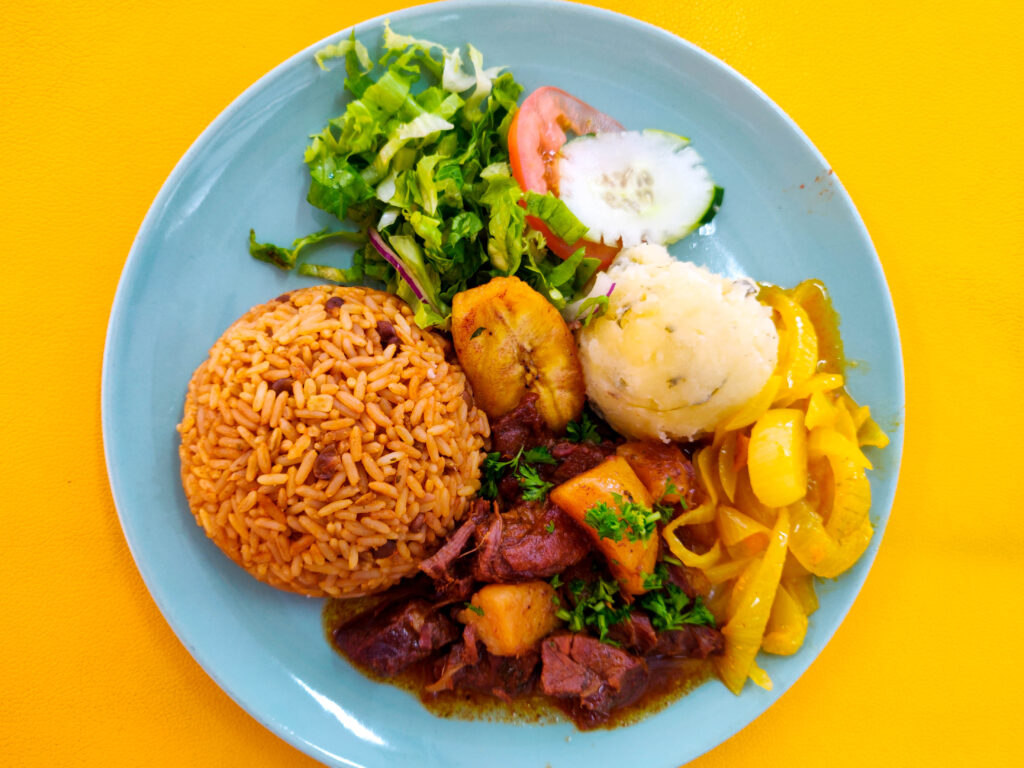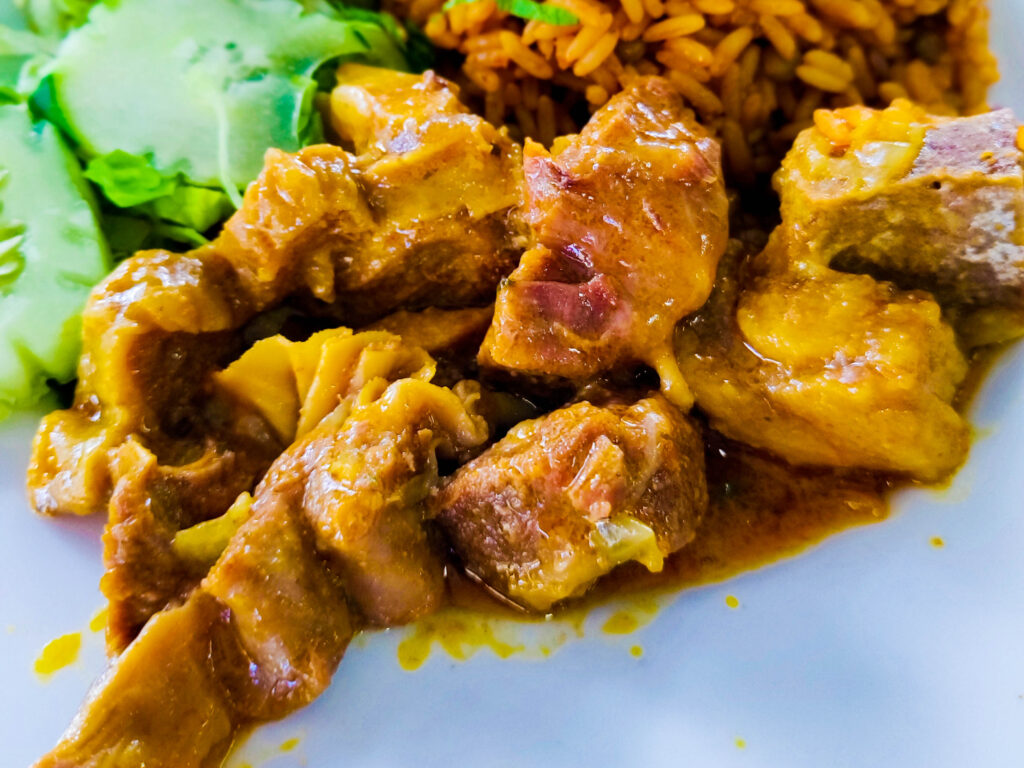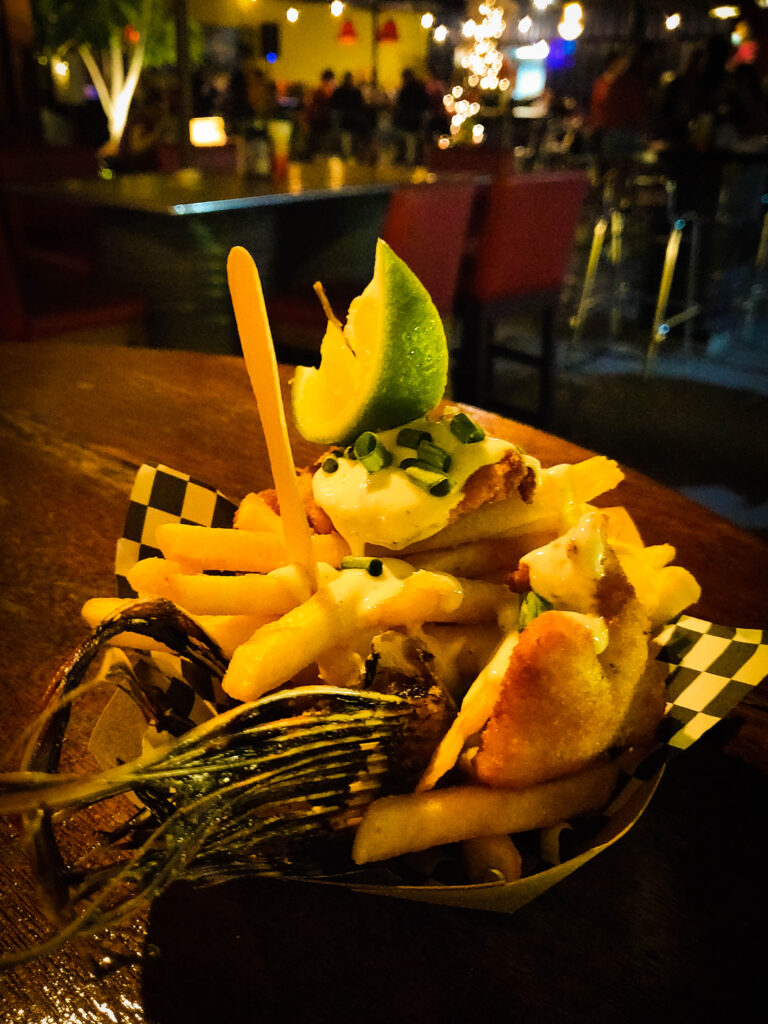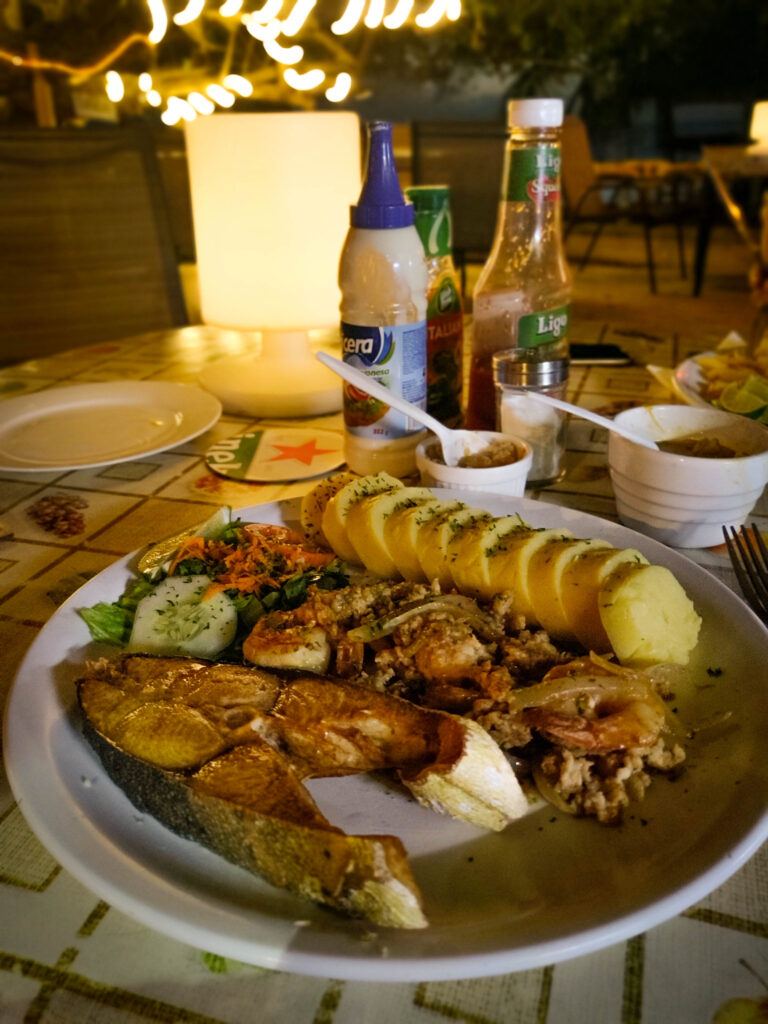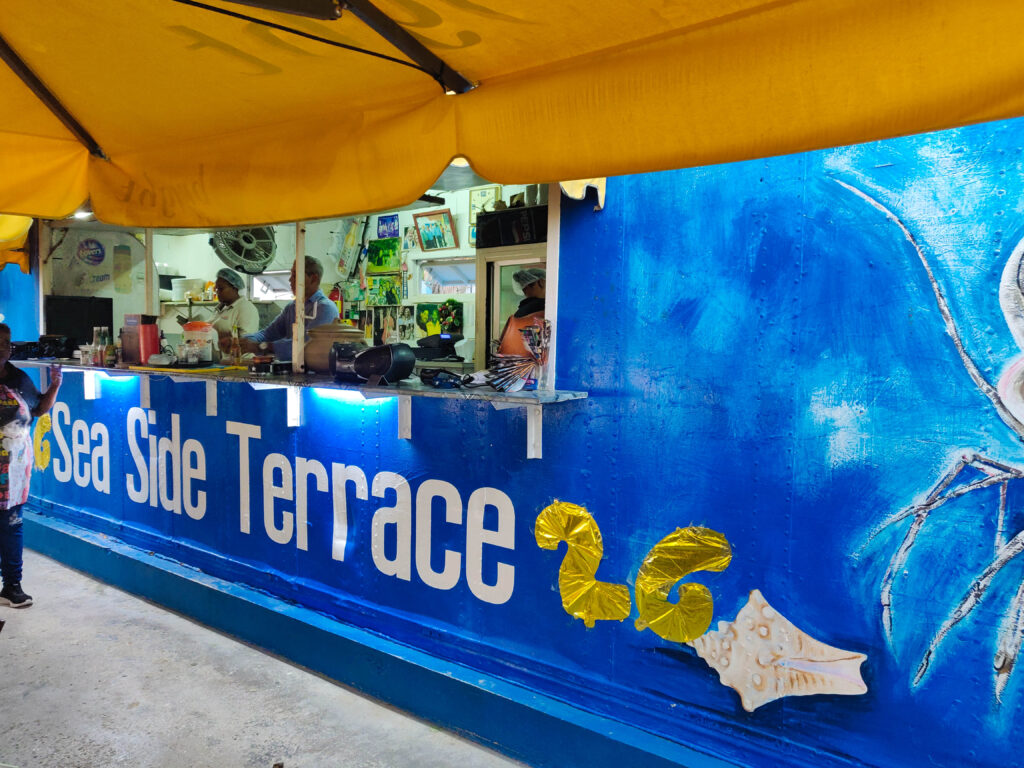Located in southern Caribbean together with Aruba and Bonaire, Curaçao form the Dutch Antilles islands known as the ABC islands.
There is a direct flight from Amsterdam to Curaçao but as tourism on the island becomes more and more accessible, more people can get to visit the “Island of Healing“.
Below is a list of 14 tips for visitors to Curaçao. I have marked all the spots with a link to Google Maps so please feel free to add them to your list.
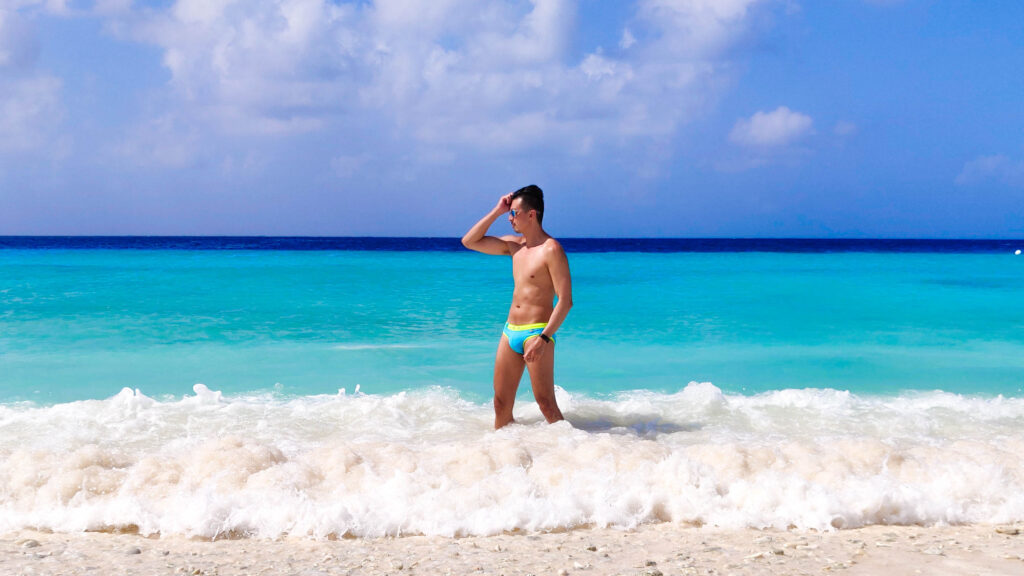
Why is the island called “Curaçao”?
The island was documented since the 16th century, and sailors suffering from scurvy were left (to die) on the island. But when their ships returned, these sailors were found to have recovered. The island is thus known in Portuguese as “Ilha da Curação” (Island of Healing).
With its constant tropical day temperature of 29 degrees Celsius throughout the year, with its warm, welcoming, friendly inhabitants, rich and complex local cuisine, stunning nature and wild life, Curaçao is indeed capable of healing any winter blues or other harmful inflictions from fellow human beings.

What to do in Curaçao?
Explore the quaint Old Town of Willemstad
Willemstad is the capital of Curaçao and is the place for you to start exploring the island. The city is divided into four quarters: Punda, Pietermaai, Scharloo and Otrobanda. The first three are located on the right bank of the inlet of the Schottegat harbour, while Otrobanda is located on the left bank.
The oldest part of the town is in Punda, so this is where you should start exploring. Many of the houses may remind you of Dutch houses except they’re painted in the bright pastel colours and glisten under the glaring Caribbean sun. Pietermaai is the party quarter located along the seafront, while Scharloo is a sleepy neighbourhood with beautiful grand houses. On the other side of the floating and detachable Koningin Emmabrug (Queen Emma Bridge), Otrobanda is the rehgular workmen’s quarters. The houses here are more rundown and the neighbourhood is not safe for lone travellers at night. However, there is some gentrification going on along the waterfront.
Take your time to explore the town. It is not big and can certainly be explored at a leisurely pace in a day. If it gets too hot, pop into a pub to enjoy a cold local President beer!
Visit the Curaçao Liqueur Distillery
Book a tour at the Curaçao Liqueur Distillery located in the Landhuis Chobolobo Mansion, which includes two cocktails!
The original Curaçao liqueur is produced on this property for more than a hundred years and the liqueur is the only authentic one produced in Curaçao! Unfortunately, the product identity was hijacked by another company selling it as ‘Blue Curaçao’ and made it better known to the world. The real deal, which you can taste here, is so much better! The guide tells you that this comes from the peel of the local Orange species grown only in Curaçao. Personally, I think it is the secret spice recipe they use that makes all the difference.
Curaçao Liqueur Distillery
129 Schottegatweg Oost
www.curacaoliqueur.com
goo.gl/maps/JnKVtv697PEcxwCdA
Strut your Stuff on Mambo Beach
Hey Mambo! If you have a body to die for (or not) that you want to show off to rich fat boomers or enter into silent competition with other hotbods, Mambo Beach is where you should hang out both day and night.
Supposedly the best spot on Mambo Beach for beach parties is the Wet & Wild Beach Club. Pity that I visited during COVID, which has put a stop to wild parties by gorgeous bimbos and himbos, but do try your luck when you’re there.
Mambo Beach itself is filled with deckchairs and umbrellas for rent. Lined with beach bars, the landside is a shopping complex housing all sorts of restaurants selling all kinds of cuisine except local ones.
Mambo Beach
Bapor Kibrá
www.mambobeach.com
goo.gl/maps/HMw4wNqeDUBPyTWE7
Cleanse your Soul at the Netto Bar
There is this gritty little bar in gritty Ortrobanda that you need to visit. It is the Netto Bar. Lit in green light, you won’t miss it even under the glaring sun. Famous for having invented the potent Green Rum (Rom Berdé), Netto Bar has achieved world fame but it refuses to change. Dingy and sticky, this is a neighbourhood bar that blasts music so loud that it is able to exorcise any demon you may bring with you. Once you down a shot (like the locals, which is completely NOT advised) or have it diluted in Sprite (or Sprite Zero if you’re too woke to possess some self-respect), you will walk out of there cleansed of all the sins of the world. Or at least feel like you’ve reached some kind of Nirvana.
Netto Bar
143 Breedestraat
g.page/netto-bar?share
Bulldoze the Bitches with an ATV
If in your daily life you’re feeling like you need to bulldoze everyone and everything around you, do it for real! On Curaçao, you can rent a guided ATV (All-terrain vehicle) to ride through the most rocky, thorny, sandy, muddy terrains and not actually hurt anyone to land you in jail. But you get the point: every now and then, we all need to crush those rude power-hungry idiotic assholes, and riding an ATV feels like you are Thor and the ATV is your hammer. Go bash them biatches!
Note: You will be expected to wear a bandana to cover your face from the dust. You can buy one there but you may like to bring your own if that’s important to you. No, a face mask is not accepted. The ATV company advises that you wear long sleeves and trousers to avoid cuts and bruises. But it is as hot as a furnace out there, so ignore them. What you’ll need to note, is your clothes shouldn’t be flapping in the wind, so no linen trousers or sundresses. Tight t-shirts or tanktop plus tight shorts or tights will do, and you need proper sports shoes and sports sunglasses. Every single thing will be muddy and dirty.
Eric’s ATV Adventures
www.curacao-atv.com
g.page/EricsATVAdventures?share
Be Awed by Hundreds of Wild Flamingos
Curaçao is famous for its stunning nature and abundant wildlife, and one of the most moving scenes is to look at hundreds of pink flamingos in the wild. The salt lake of Saliña Jan Kok, Hermanus, Sibirie is a feeding ground of wild flamingos and the most accessible spot is along the road called “Weg naar St Willibrordus“.
The entire scene that you will witness is breathtaking. These birds are so beautiful and elegant, and against the backdrop of a mountain top, their gracefulness is like a ballet performance.
Note that wild flamingos feed AT NIGHT when shrimps and other tiny sea creatures are most active. But as you won’t see them in the dark, it is best to visit the spot at dawn or at dusk. No point going there in the day as there won’t be a single bird in sight.
Flamingo Watching Spot
goo.gl/maps/iC4h7ttqDPGou5Zd8

Swim in the Bluest Sea in Klein Curaçao
Klein Curaçao (Small Curaçao) is this tiny uninhabited island off the southeastern tip of Curaçao. If you can ignore its morbid history being a quarantine island, the place is one of the most beautiful spots on earth. The paradise image of white sandy beaches and clear turquoise sea is what Klein Curaçao is about – nothing more, nothing less.
You can book a day trip to Klein Curaçao and mostly, breakfast and lunch are included. There is really nothing much to do on the island (there is a ruined lighthouse and the ruins of a previous lighthouse plus a ship wreck), except to take stunning photos and videos for your Instagram.
You can do some snorkeling but the sea life isn’t great here, compared to other spots (see below).
Note: You simply cannot miss visiting Klein Curaçao if you go to Curaçao. It’s like going to a barbecue to eat the salad. The yacht trip going there is rough, and there was some puking going on. But returning to Curaçao is a lot calmer so you’d be fine by dinnertime.
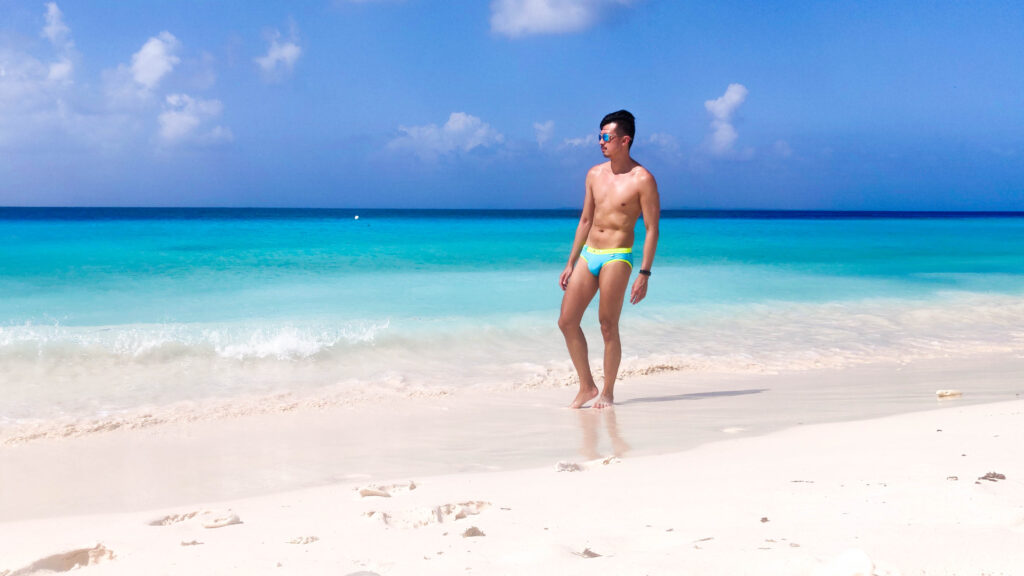
Watch the Wild Waves hitting on Treacherous Cliffs
Curaçao must have been a really dangerous place to land a few hundred years ago. The whole of its northern and western coasts are covered with sharp, rocky cliffs rising several storeys high. These cliffs are constantly hit by extremely dangerous rough waves, some of them can reach metres above the cliffs themselves! You are free to get close to these cliffs to witness the power of nature. But do bear in mind there is no one to save you should you fall in. It can get very slippery so if you are not a careful or mature person, please stay away.
The word ‘Boka‘ means ‘Bay’ in Papiamento, but it is less idyllic in reality. There are several cliffs which we really thought were impressive:
Boka Grandi: Located in the Christoffel Park, this ‘big bay’ has a beach. But swimming is prohibited for obvious reasons.
Boka Tabla: The ‘table bay’ is a flat cliff shaped like a table. It has a viewing platform for you to experience the power of the waves without actually dying. What’s really fun is the ‘Cave’ which is a chamber inside the cliff, located on the right of Boka Tabla. Take off your shoes and dry clothes and let yourself be knocked out by the incoming waves. Don’t worry, you’re actually inside a stationary cage so you won’t be dragged into the sea.
Boka Wandomi: This looks stunning as it is a natural bridge formed by the rocks. It is located in the Shete Boka National Park like Boka Tabla.
Christoffel Park
www.christoffelpark.org
goo.gl/maps/ebVGSVTPtkaQtAju6
Shete Boka National Park
www.shetebokapark.org
goo.gl/maps/YFUtdBHHtjGMKP6B8
Where to go snorkeling in Curaçao?
If you go to Curaçao and not go snorkeling, you really are missing out a lot! We got a cheap starter snorkels and the small investment paid off so well.
Even just a few metres beyond the sandy beaches, the waters are teeming with life, and if you are lucky, you may even come across turtles!
The rule is that you shouldn’t touch any animal or plant. The underwater world is enchanting and mesmerizing, and the water is so clear, you’d be rewarded with an amazing once-in-a-lifetime encounter with incredibly beautiful fish swimming completely at ease around you.
There are two snorkeling spots that visitors swear by:
Playa Piskadó: with a pier that stretches out into the sea, this beach is a snorkeling paradise because fishermen throw leftovers overboard, turtles and fish are known to swarm to this area. Personally I have swum with three different turtles here!
goo.gl/maps/yfGTnu93KjkaXEJY6
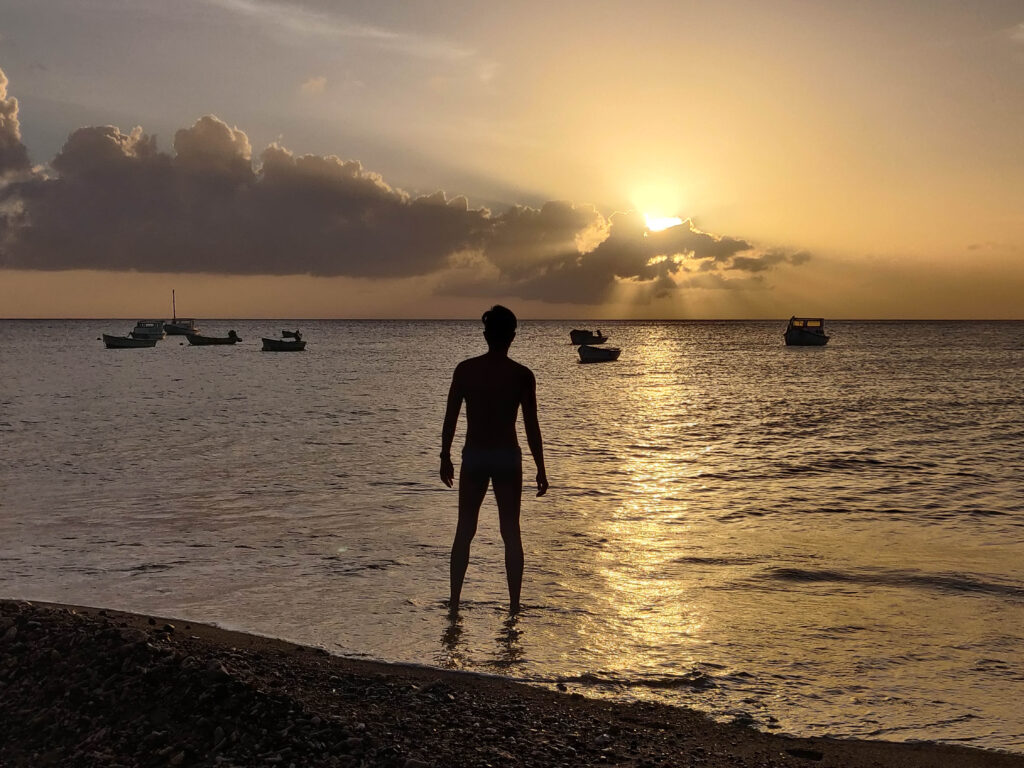
Daaibooi Beach: This is a relaxed beach with very little amenities and food options. But it is so much better to spend your day here than in a busy tourist-filled spot. While some venture out here to enjoy the peace far from the maddening crowd, others know this area to be a snorkeling paradise. The gigantic rocks just off the shore form a micro aquarium, and the myriad of fish and turtles that teem these waters is just a wonder to behold.
goo.gl/maps/KnYeDZ8fQQ9qysPcA
Note: You really have to be careful when snorkeling, because again, there are no lifeguards around and the waters are known to be unpredictable. Be vigilant and careful by not straying from the shore and always return immediately once the currents start to pick up speed. We have heard of a death from a fellow traveller in one of the above spots the very day we were there.
So these two places are great for snorkeling although there certainly are other great spots. For swimming and suntanning, apart from the showy Mambo Beach mentioned, there are far prettier beaches all along the east coast of Curaçao. The famous ones are the Grote Knip, Kleine Knip, Playa Kalki, Playa Santa Kruz. You may have heard of Playa Forti where people jump 10 metres into the water. We were there and indeed there were people attempting the dive. But again, there have also been reports of death because of the high impact.
What to eat in Curaçao?
Carribean cuisine is so rich, diverse, creative and interesting, that all visitors to Curaçao should stop eating rubbish American pizzas and go for local food every meal. The cuisine of a place teaches us about the tastes, the produce, the lifestyle of its people, and ultimately it teaches us about the local culture. That’s why we travel, to learn and to experience. To be able to enjoy new tastes and to learn something new, that makes eating local cuisine so much fun!
Pastechi
These look like empanadas. They’re certainly influenced by empanadas, but they are not empanadas. Empanadas are made with cornmeal while pastechis are made with plain flour. Pastechis are great as a breakfast food! They are sold in food trucks and we found them by the big market in Willemstad. There are the ones stuffed with beef (karni), chicken (galiña) or cheese (keshi).
Karni Stoba and Kabritu Stoba
Curaçao stews are so rich and interesting in taste, they are somewhere between a Belgian stoofvlees and an Indonesian Rendang. Often served with brown rice and fried plantain, the stoba (stew) is a hearty meal. Karni Stoba is a beef stew, while Kabritu Stoba is a goat stew. Goat is a more pungent meat compared to lamb, but Kabritu Stoba as a goat dish is extremely mild in my opinion. Both stobas are worth a try! The best place to experience the local cuisine is the local food hall in Willemstad, called ‘Plasa Bieu‘. The food hall is lined with stalls and the customers are mostly locals too, which is a good sign. Our favourite stall is called Zus di Plaza, located right at the end of the food hall.
Plasa Bieu
goo.gl/maps/eAJPPPN2kbrNVqh19
Giambo
This is a very slimy soup made with okra. Personally I am a fan of okra. But I must admit this dish takes some taking use to. As weird as the texture might seem to you, Giambo is a signature African-Caribbean dish, related to Louisiana’s Gumbo. This is because both are derived from the Bantu name for okra, “ki ngombo“. West Africa is the home of okra. But Giambo is not Gumbo. Giambo is deceptively light in colour, despite being enriched with fish, salted goat and beef as well as bones. Ask for a small bowl to try in Plasa Bieu.
Deep-fried Lionfish
Lionfish is this beautiful thorny fish of the Pterois genus originally from the Indian and Pacific Oceans. However, they are now an invasive species in the Caribbean Sea. To help control the population, locals have started to discover the culinary goodness of the lionfish. The spines are venomous but the meat is not. The taste of the lionfish is not dissimilar to that of the grouper. Here in Curaçao, lionfish is being served as a newly discovered local delicacy and I must admit it is quite addictive! To try an upmarket version of the deepfried lionfish, go to the funky Bario Urban Street Food located in Otrobanda. Bario Urban Street Food is an open courtyard dining experience with small bites and wonderful cocktails. The prices are not cheap and the portions are not big, but the quality is high. I’d suggest it as the first part of a two-part night out. I had a cocktail and a lionfish and chips, and they were mindblowingly good.
Bario Urban Street Food
www.bariostreetfood.com
g.page/Bariourbanstreetfood?share
Deep-fried Whole Red Snapper and Deep-fried Mahi-Mahi
You won’t miss the dish of Deep-fried Red Snapper wherever you go in Curaçao. I’m a big seafood fan so I definitely went straight for it. While the fish is fresh, it may be a bit too dry for my liking, although the kick of biting into really crunchy fish felt so good. Another fish you’ll need to try is the Mahi-mahi fish. The Mahi-mahi, also known as the Common Dolphinfish, is a beautiful green fish that lives here in the Caribbean Sea. It is a little tougher than the Red Snapper or Lionfish, and is not unlike tuna in its texture. If you like seafood, especially very fresh seafood, go to Sea Side Terrace by the Playa Marie Pampoen. The fish sold there was caught in the morning, and you definitely get the best seafood here, with an incredible sunset view. The elderly waitress there, is one sassy lady. Be nice to her and you’ll get really good service!
Sea Side Terrace
goo.gl/maps/PYKyTccHiKa6hQky7
Transport in Curaçao
You definitely need a car to get around in Curaçao. Car-rental is not expensive, just make sure you have a parking spot at your hotel. If you cannot drive, you would then need to take taxis, as bikes are not advised and even walking outside the centre is not. To hail or call for a taxi, you will have to negotiate a price with them on the spot in US dollars. Your most efficient and cheapest option is to use 24-7TAXI. Download their app (you’ll need wifi or data connection) to get your taxi. The price difference is more than 5 US dollars! I would suggest to use them for your airport transfer already before you leave for Curaçao.
24-7TAXI
247taxi.cw
Languages in Curaçao
The local language in the Dutch Antilles is Papiamento, which is a derivative of a Portuguese creole with roots in West Africa and influenced first by Spanish and later by Dutch. Try to learn some words in Papiamento and it will serve you a long way:
“Bon bini“: Welcome
“Bon dia“: Good day or Good Morning
“Bon tardi“: Good afternoon, Good evening
“Bon nochi“: Good evening, Goodnight
“Por fabor“: Please
“Danki“: Thank you
But Dutch and English are widely spoken and understood.
Money in Curaçao
The local currency is the Antillean Guilder called “Gulden” in Dutch. But most tourist spots and shops accept and prefer US dollars. First, because the exchange rate is often rounded off in their favour. Secondly, because it is very difficult to get gulden outside of the Dutch Antilles and unfortunately euros are not accepted in Curaçao. The best thing for you to do is to bring along Euros and change them at a bank in town. The rates here in a bank are good and the commission is very low. But you’ll have to bring along your passport and air ticket in order to do that. Otherwise, most places accept payment by credit card in US dollars. Even if you accept payment in gulden, your credit card will most likely not allow the transaction to go through.
Safety in Curaçao
Within the strict limits of tourist spots, Curaçao is a safe destination. If you venture outside tourist areas either alone or at night, no one can ensure your safety. You will find shops and eateries have metal grills protecting the seller, which is already an indication of the safety level for even locals. But don’t let that scare you off. Stay vigilant when you need to and travel within your company.
